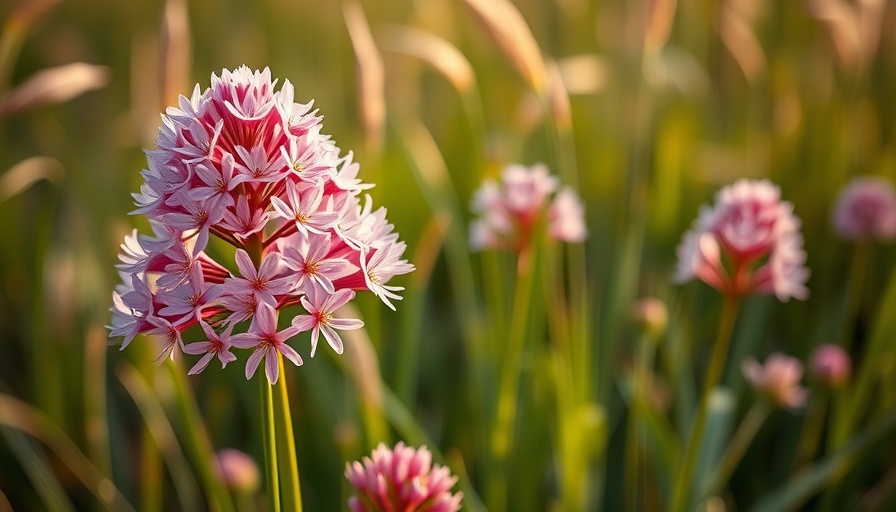
Discover the Beauty and Benefits of Prairie Onions
With their delicate pink and lavender blooms, prairie onions (Allium stellatum) are not only a stunning addition to your garden but also a versatile plant that offers various culinary and medicinal benefits. Known by several names, including cliff onion and pink wild onion, this flowering perennial is cherished by many for its resilience, ease of care, and the myriad of ways it can enrich your garden’s ecosystem.
Historical Context: A Culinary Tradition
Natively found across central North America, prairie onions have a rich history that traces back to the diets of both Native Americans and early settlers. This allium is entirely edible; from the bulbs to the delicate flowers, everything can be consumed, offering a truly unique experience for the home gardener. Traditionally, the bulbs were utilized both raw and cooked, while the leaves and flowers could be added fresh to salads or used for garnish.
Pest-Resistant Plants: A Gardener's Ally
One of the standout features of prairie onions is their resilience against pests. Unlike many common garden plants that attract bugs or rodents, the pungent scent of Allium stellatum acts as a natural deterrent, keeping your garden not only beautiful but also healthier. This attribute makes them perfect companions with other plants in a diverse garden, contributing to an eco-friendly and sustainable gardening strategy.
How to Grow Prairie Onions: Your Step-by-Step Guide
Growing prairie onions is straightforward, even for novice gardeners. Here’s a quick rundown of what you need to know:
- Planting Time: Prairie onions thrive best when planted in early spring. Start by selecting a sunny spot with well-drained soil; they prefer sandy soils with a pH range of 6.6 to 7.5.
- Planting Depth: While planting bulbs, ensure they are placed 4 inches deep, with spacing of 4-6 inches between each bulb to allow for growth.
- Water Needs: These plants are drought-resistant; your focus should be on planting them in low-water zones to meet their needs effectively.
With a little effort and care, you'll soon enjoy the beautiful blooms and further enhance your garden's diversity.
Climate-Friendly Gardening: Cultivating Sustainability
In a world increasingly concerned with environmental sustainability, prairie onions serve as a model for responsible gardening. Their low water requirements and pest-resistant properties contribute to a climate-friendly garden architecture while encouraging biodiversity. Being a native species, prairie onions support local pollinators, making them a valuable addition to any garden focused on ecological balance.
Harvesting and Using Prairie Onions: Culinary Insights
The culinary uses of prairie onions are vast. Raw bulbs have a milder flavor compared to their garden counterparts, making them suitable for fresh dishes. The leaves can be used similarly to chives, offering a delightful burst of flavor to salads, dips, and other dishes. Furthermore, you can experiment with infusing oils or making pestos with the flowers, enhancing your meals while also enjoying the satisfaction of using home-grown ingredients.
Practical Gardening Hacks: Best Practices
As you embark on your journey with prairie onions, consider implementing the following gardening hacks for success:
- Companion Planting: Pair prairie onions with plants that benefit from pest resistance, such as tomatoes and carrots, to create a symbiotic garden environment.
- Organic Maintenance: Utilize homemade organic fertilizers to nourish your prairie onions and boost soil health.
- Seed Starting Techniques: For those interested in propagation, consider collecting seeds from your blooming onions. Start them indoors before transferring them to outdoor beds for best results.
Embrace Self-Sufficiency: The Joy of Growing Your Own Food
By incorporating prairie onions into your garden, you cultivate not just a plant but also the spirit of self-sufficiency. Gardening fosters a deeper connection with nature and encourages a proactive approach towards food security and sustainability. Embrace the journey of discovery, nurture your plants, and relish in the rewards they bring to your table.
In conclusion, prairie onions present a beautiful opportunity to enhance your gardening experience through their aesthetic appeal, ecological benefits, and culinary versatility. Whether you are a seasoned gardener or a beginner, including Allium stellatum in your garden will enrich your gardening journey. Start growing these hardy, edible flowers today to enjoy a sustainable and rewarding gardening adventure!
 Add Row
Add Row  Add
Add 




 Add Row
Add Row  Add
Add 

Write A Comment